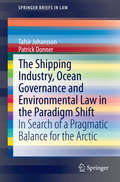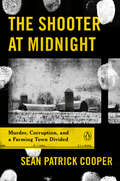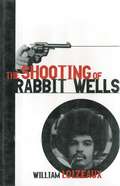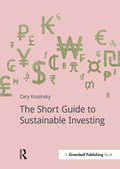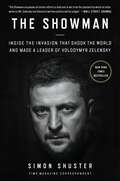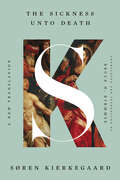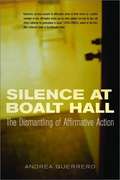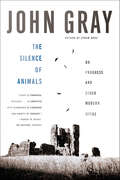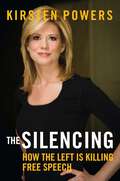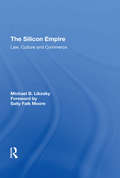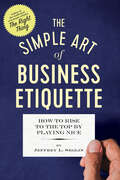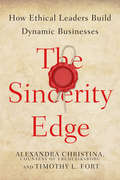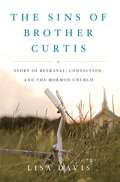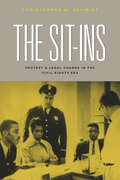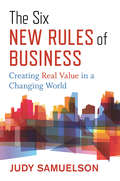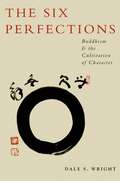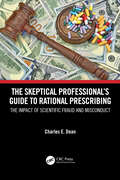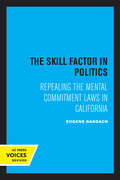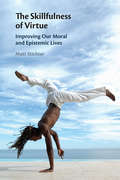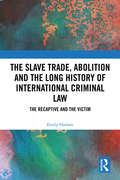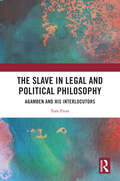- Table View
- List View
The Shield of Nationality
by Rachel L. WellhausenThere is extraordinary variation in how governments treat multinational corporations in emerging economies; in fact, governments around the world have nationalized or eaten away at the value of foreign-owned property in violation of international treaties. This even occurs in poor countries, where governments are expected to, at a minimum, respect the contracts they make with foreign firms lest foreign capital flee. In The Shield of Nationality, Rachel Wellhausen introduces foreign-firm nationality as a key determinant of firms' responses to government breaches of contract. Firms of the same nationality are likely to see a compatriot's broken contract as a forewarning of their own problems, leading them to take flight or fight. In contrast, firms of other nationalities are likely to meet the broken contract with apparent indifference. Evidence includes quantitative analysis and case studies that draw on field research in Ukraine, Moldova, and Romania.
The Shifting Landscape of Global Trade Governance: World Trade Forum
by Manfred Elsig Michael Hahn Gabriele SpilkerToday's trade regime and its rules are under pressure. Increasing societal discontent with globalization and the rise of protectionist measures threaten the trade regime's legitimacy and effectiveness. The authors explore systemic challenges to the trade regime, inter alia, related to development, migration, inequality, the digital economy and climate change. The Shifting Landscape of Global Trade Governance allows the readers, in times of change, to put current developments into context and offers an understanding of the different dynamics defining today's regulation of the global economy. Chapters authored by leading researchers from different disciplines - law, political science and economics - address the challenges of the global economic system and share novel outlooks, both theory- and data-based, for the future.
The Shipping Industry, Ocean Governance and Environmental Law in the Paradigm Shift
by Tafsir Johansson Patrick DonnerThis book examines the corpus of status quo environmental legal regime, geographical issues and redundant "stakeholder claims," which persist in the Arctic. It examines multifarious theories relating not only to conflicting and opposing interests, but also to parties to whom the shipping industry should be accountable. The unique aspect of this book is the Corporate Social responsibility analysis pertaining to the Arctic and alternatives that strike a balance between the increased commercialization of the shipping industry and the laws and concepts of ocean governance. The book relevantly puts forward the concept of "ocean governance" and to what extent it can be addressed in terms of the Arctic. What distinguishes this book from others is the fact that it is not limited to examining the effects of climate change and how it is reshaping the way scholars assume the Arctic will be in the near future. Rather it creates a transparent nexus between opposing claims and increasing commercial interests and proceeds to scrutinize the efforts of the Arctic Council and individual Arctic coastal states. In this context, the book follows a given equation based on initial theories and how the opposing claims and increasing commercialization side of the equation can be balanced with the appropriate legal norm. It also reflects on the critical aspects of "hard law and soft law" which are two opposite ends of the legal pole and core elements of any legal spectrum. The book, after reflecting on those two elements, finally proposes a new Arctic legal regime, which is intricate and detailed and is basically a hierarchy based on logic and reasoning. In doing so, it imports a pristine theory for a pristine territory.
The Shooter at Midnight: Murder, Corruption, and a Farming Town Divided
by Sean Patrick CooperThe harrowing true story of a cold-blooded murder and the campaign to bring justice to a suffering Midwestern townOn a November night in 1990, Cathy Robertson is murdered in her home outside Chillicothe, Missouri. After law enforcement conduct a haphazard investigation, the sheriff&’s office puts the case in the hands of a Kansas City private eye with his own agenda. In a close-knit town still reeling from the aftereffects of the farming crisis, friends and neighbors abruptly fracture into opposing camps. Mark Woodworth, a Robertson family neighbor, eventually receives four life sentences for a crime that a growing group of local supporters believe he didn&’t commit.In a surprising, dramatic narrative that spans decades, Mark&’s family turns to Robert Ramsey, an attorney willing to take on a corrupt political machine suppressing the truth. But the community&’s way of life is irrevocably damaged by the parallel tragedies of the farming crisis and Cathy&’s unsolved murder, in a gripping story about the fault-lines of a fracturing America that continue to cut across the farm belt today.
The Shooting of Rabbit Wells: A White Cop, a Young Man of Color, and an American Tragedy
by William LoizeauxWhat put a white cop and a black youth on a tragic collision course? On a frigid winter’s night in 1973, William "Rabbit” Wells, a young man of mixed race, was shot and killed by a white policeman named William Sorgie outside a bar. The shooting stunned the placid, prosperous communities of New York. For twenty-five years author William Loizeaux, who went to high school with Rabbit, hasn't been able to let go of a story that struck at the core of the place that he, along with Rabbit and Sorgie, called home. With clear-eyed compassion and unsparing honesty, The Shooting of Rabbit Wells recreates the lives of both victim and killer and the forces that brought them together. By giving us the life of Rabbit Wells, Loizeaux makes us understand-and feel-how unacceptable and irreparable his loss was, and how deeply the bullet that killed him is lodged in the American identity.
The Short Guide to Sustainable Investing (Doshorts Ser.)
by Cary KrosinskyThe vast majority of invested assets do not consider environmental, social or governance (ESG) factors. Socially responsible investing (SRI) emerged to address these challenges, but it remains largely deployed in "negative strategies" such as sector screening, and continues to be a small investment niche, largely due to perceptions about potential underperformance.Sustainable investing is a new, more positive investment construct, described as "an investment discipline that explicitly considers future social and environmental trends in financial decision making, in order to provide the best risk-adjusted and opportunity-directed returns for investors. By anticipating these trends ahead of the market, sustainable investing seeks to identify 'predictable surprises' that can help maximize value over the long term."This concise guide by one of the sector's leading experts: Disentangles the terminology around SRI and describes a new, positive, opportunities-oriented paradigm for sustainable investing Showcases funds and strategies that are delivering outperformance within ecological limitsSets out the key megatrends and scenarios which investors need to consider, and Offers a practical guide to constructing a sustainable portfolio. This is absolutely essential reading for investors, fund managers and analysts who need to get up to speed on sustainable investing.
The Showman: Inside the Invasion That Shook the World and Made a Leader of Volodymyr Zelensky
by Simon ShusterINSTANT NEW YORK TIMES BESTSELLER!"Shuster crafts an intimate account of the Russian invasion, which vividly captures Zelensky’s transformation from a clean-cut funnyman into a war hero out of central casting." --New York Times Book Review; Editors' Choice Selection“The Showman surpasses all similar efforts to date and is set to be the standard by which all other works on Mr. Zelensky and Ukraine’s wartime politics will be judged." —Wall Street JournalA monumental account of Russia’s invasion of Ukraine and the forging of a leader, The Showman provides an insider’s perspective on the war reshaping our world, based on unprecedented access to Volodymyr Zelensky and the high command in Kyiv.Time correspondent Simon Shuster chronicles the life and leadership of Volodymyr Zelensky from the dressing rooms of his variety shows to the muddy trenches of Ukraine’s war with Russia. Based on four years of reporting; extensive travels with President Zelensky to the front; and dozens of interviews with him, his wife, his friends and enemies, his advisers, ministers and military commanders, Shuster tells the intimate and revealing story of the president’s evolution from a slapstick actor to a symbol of resilience.In their most candid accounts of the war so far, members of Zelensky’s inner circle show how the president’s character changed under the strains of leadership and the horrors he witnessed each day. His wife, First Lady Olena Zelenska, describes her escape from Kyiv with their children, her life on the run, and the tensions that emerged in her marriage as she struggled to return to a meaningful role in the administration. Ukraine’s top military commander, General Valery Zaluzhny, shares the untold story of his fraught relationship with the president and the subsequent consequences.Reflecting on their own regrets and critical decisions, Zelensky and his senior aides open up about the causes of the Russian invasion and how it may have been avoided. They describe with astonishing frankness how their peace talks with Vladimir Putin fell apart and how their faith in the U.S. faltered, both under Donald Trump and Joe Biden.The Showman provides the first inside account of Zelensky’s life amid the invasion, offering a clear-eyed view of his failures to prepare for it and his willingness to silence dissent under martial law. What emerges is a complex picture of a man struggling to break what he sees as a historical cycle of oppression that began generations before he was born. Even as the war drags on, Zelensky lays out his vision for its future course and, through his actions, demonstrates his strategy for countering the Russians and keeping the West on his side.The Showman, as a work of eyewitness journalism, provides an essential perspective on the war defining our age, resulting in a riveting, vivid portrait of the invasion as experienced by its number one target and improbable hero.
The Sickness Unto Death: A New Translation
by Søren KierkegaardThe first new translation of Kierkegaard’s masterwork in a generation brings to life this impassioned investigation of the self. The “greatest psychologist of the spirit since St. Augustine” (Gregory R. Beabout), Soren Kierkegaard is renowned for such richly imagined philosophical works as Fear and Trembling and The Concept of Anxiety. Yet only The Sickness unto Death condenses his most essential ideas—on aesthetics, ethics, and religion—into a single volume. First published in 1849 under the pseudonym Anti-Climacus, The Sickness unto Death is as demanding as it is concise, posing fundamental yet complicated questions about human nature and the self. Beginning with the biblical story of Lazarus, whom Jesus miraculously raised from the dead, The Sickness unto Death identifies the titular “sickness” as “despair,” a state worse than death because it is “unto” death. As Kierkegaard demonstrates, despair—or, in Christian categories, “sin”—is a sickness not of the body, but of the spirit, and thus, of the self. A dramatic “medical history” of the course of this sickness, The Sickness unto Death culminates, as all medical histories do, in a crisis, a turning point at which the self, the patient, either realizes or abandons itself. Given the choice between eternal salvation and extinction, Kierkegaard calls upon the self to become receptive in faith to God’s mercy, “even today, even at this hour, even at this instant.” With his “historian’s eye” (Vanessa Parks Rumble) and “lucid and informative” (George Pattison) introduction, Bruce H. Kirmmse deftly situates The Sickness unto Death in the historical context of the European revolutions of 1848, reminding us that even Kierkegaard was a product of his time and place. Yet as Kirmmse ultimately shows, The Sickness unto Death is as apt for our times as for mid-nineteenth-century Europe, speaking to the human soul across generations and centuries.
The Sierra Leone Special Court and Its Legacy
by Charles Chernor JallohThe Special Court for Sierra Leone (SCSL) is the third modern international criminal tribunal supported by the United Nations and the first to be situated where the crimes were committed. This timely, important, and comprehensive book is the first to critically assess the impact and legacy of the SCSL for Africa and international criminal law. The collection, containing 37 original chapters from leading scholars and respected practitioners with inside knowledge of the tribunal, analyzes cutting-edge and controversial issues with significant implications for international criminal law and transitional justice. These include joint criminal enterprise; the novel crime against humanity of forced marriage; the war crime prohibiting enlisting and using child soldiers in the first court to prosecute that offense; the prosecution of the war crime of attacks against United Nations peacekeepers in the first tribunal where this offense was prosecuted; the tension between truth commissions and criminal trials in the first country to simultaneously have the two; and the questions of whether it is permissible under international law for states to unilaterally confer blanket amnesties to local perpetrators of universally condemned international crimes, whether the immunities enjoyed by an incumbent head of a third state bars his prosecution before an ad hoc treaty-based international criminal court, and whether such courts may be funded by donations from states without compromising judicial independence.
The Silence at Boalt Hall: The Dismantling of Affirmative Action
by Andrea GuerreroThis gripping narrative tells the story of students, faculty, and administrators struggling with racial diversity in higher education. The setting is Boalt Hall, the prestigious UC-Berkeley law school where Guerrero was a student, and where such testimonies are as underrepresented as are students of color.
The Silence of Animals: On Progress and Other Modern Myths
by John GrayA searching, captivating look at the persistence of myth in our modern world"By nature volatile and discordant, the human animal looks to silence for relief from being itself while other creatures enjoy silence as their birthright."In a book by turns chilling and beautiful, John Gray continues the thinking that made his Straw Dogs such a cult classic. Gray draws on an extraordinary array of memoirs, poems, fiction, and philosophy to re-imagine our place in the world. Writers as varied as Ballard, Borges, Conrad, and Freud have been mesmerized by forms of human extremity—experiences that are on the outer edge of the possible or that tip into fantasy and myth. What happens to us when we starve, when we fight, when we are imprisoned? And how do our imaginations leap into worlds way beyond our real experiences?The Silence of Animals is consistently fascinating, filled with unforgettable images and a delight in the conundrum of human existence—an existence that we decorate with countless myths and ideas, where we twist and turn to avoid acknowledging that we too are animals, separated from the others perhaps only by our self-conceit. In the Babel we have created for ourselves, it is the silence of animals that both reproaches and bewitches us.
The Silencing: How the Left is Killing Free Speech
by Kirsten Powers*A New York Times bestseller!*Free speech and freedom of conscience have long been core American values. Yet a growing intolerance from the left side of the political spectrum is threatening Americans' ability to freely express beliefs without fear of retaliation. USA Today columnist and Fox News contributor Kirsten Powers calls it "The Silencing."Powers chronicles this forced march toward conformity in an exposé of the illiberal tactics deployed to shut down debate on some of the most important issues of the day. How is it that liberalism, once associated with open-mindedness and reason, has become a vehicle for irrational prejudice, ideological conformity, and the marginalization of dissent? What is happening to free speech in America?
The Silicon Empire: Law, Culture and Commerce (Law, Justice, And Power Ser.)
by Michael B. LikoskyMichael Likosky examines the continuities and discontinuities between colonial and present-day high tech transnational legal orders. His concern is specifically with the colonial characteristics of the legal order which underpins the global high tech economy. He distinguishes the democratic and human rights rhetoric of this economy from a reality wherein the legal order is often used to reproduce colonial-type relationships. Just as in the colonial period, the expansion of trans-border commerce overlaps with democratic demands and human rights in complex, multifaceted and paradoxical ways. Through a case study looking at Malaysia's Multimedia Super Corridor, a high tech national development plan and foreign direct investment scheme, he examines how the transnational leaders of the high tech economy along with the Malaysian political elite react when human rights problems threaten to derail commercial plans.
The Simple Art of Business Etiquette: How to Rise to the Top by Playing Nice
by Jeffrey L. SeglinClimb the Corporate Ladder Without Stepping on Others From ethics columnist and Harvard lecturer Jeffrey L. Seglin, discover practical tips for succeeding professionally by succeeding socially. Practicing business etiquette doesn't mean pretending to be someone you're not. Brimming with practical, up-to-date tips on minding your business manners, The Simple Art of Business Etiquette guides you through the tricky territory of office etiquette with real-life stories and workplace scenarios. Become attuned to body language (Don't gawk at others during meetings or at any other time. It's creepy.) Engage in thoughtful introductions (Don't guess at someone's name if you don't remember it.) Practice proper e-mail etiquette (Do you really want to be the jerk who sends annoying e-mails around the office?) Curtail office conflicts (Never punch anyone in the workplace. Never.) Exhibit workplace sensitivity (Listen to your coworkers without cutting them off). Plus, decode the 15 most commonly-used phrases in business. The Simple Art of Business Etiquette proves that minding your manners goes a long way toward successfully advancing your career.
The Sincerity Edge: How Ethical Leaders Build Dynamic Businesses
by Timothy L. Fort Alexandra Christina, Countess of FrederiksborgRecognizing their role as "corporate citizens," companies are seeking guidance on how to be true to their missions, principled in practice, and well regarded for their contributions to society. As this book reveals, the key lies in sincerity—the sum of values like authenticity, integrity, and trust. Countess Alexandra Christina, a European corporate director, and Timothy L. Fort, a leading American scholar, delineate a clear and actionable model for bringing sincerity to the business context. Their vision for sincerity complies with law, aligns corporate social and financial performance, and values corporate ethics in its own right, rather than as a means to an end. Underpinning this model is a synthesis of the top research in the field and a suite of new interviews with current and former CEOs. Tracing inspirational tales and scandals alike, this book shows how leaders can head up companies that more reliably make good decisions and conduct themselves in a trustworthy manner. It then concludes with twelve concrete actions that businesses can take to cultivate "the sincerity edge."
The Sins of Brother Curtis
by Lisa DavisThis brilliantly reported, unforgettable true story reveals how one of the most monstrous sexual criminals in the history of the Mormon church preyed on his victims even as he was protected by the church elders who knew of his behavior.When Seattle attorney Tim Kosnoff agreed to listen to an eighteen-year-old man who claimed to have been molested by his Mormon Sunday school teacher, he had no idea he was embarking on a quest for justice on behalf of multiple victims or that the battle would consume years of his life and pit him against the vast, powerful, and unrepentant Mormon church itself. As Kosnoff began to investigate the case, he discovered that the Sunday school teacher, a mysterious figure named Frank Curtis, possessed a long and violent prison record before he was welcomed into the church, where he became a respected elder entrusted with the care of prepubescent Mormon boys. Through Lisa Davis's deft storytelling, two astonishing narratives unfold. The first shows how Brother Curtis ingratiated himself into the lives of young boys from working-class Mormon families where money was tight, and was accepted by mothers and fathers who saw in him a kindly uncle or grandfather figure who enjoyed the blessing of the church. Having gained the families' trust, Curtis became fiendishly helpful, offering to supervise trips or overnights out of the sight of parents, when he could manipulate his victims or ply them with alcohol. The other narrative is a real-life legal thriller. As Davis shows, Kosnoff and his partners tirelessly assembled the case against the church, sifting through records, tracking down victims, and convincing them to testify about Brother Curtis's acts. What began as a case of one plaintiff turned into a complex web stretching across multiple states. Joined by what would become a team of attorneys and investigators, Kosnoff found himself up against one of the most insular institutions in the United States: the secretive and powerful Mormon church. The amazing legal case at the heart of The Sins of Brother Curtis shows how the church's elite, well-funded team of attorneys claimed the church was protected under the Constitution from revealing that Curtis had molested a number of Mormon boys. Yet Kosnoff and his devoted legal team (which included a female investigator adept at getting parents of victims to talk to her) succeeded in forcing the church to reveal that it knew about Curtis and ultimately achieved a successful settlement. Emotionally powerful page by page, The Sins of Brother Curtis delivers a redemptive reading experience in which the truth, no matter how painful and hidden, is told at last and justice is hard won. This is a remarkable story, all true.
The Sit-Ins: Protest and Legal Change in the Civil Rights Era (Chicago Series in Law and Society)
by Christopher W. SchmidtOn February 1, 1960, four African American college students entered the Woolworth department store in Greensboro, North Carolina, and sat down at the lunch counter. This lunch counter, like most in the American South, refused to serve black customers. The four students remained in their seats until the store closed. In the following days, they returned, joined by growing numbers of fellow students. These “sit-in” demonstrations soon spread to other southern cities, drawing in thousands of students and coalescing into a protest movement that would transform the struggle for racial equality. The Sit-Ins tells the story of the student lunch counter protests and the national debate they sparked over the meaning of the constitutional right of all Americans to equal protection of the law. Christopher W. Schmidt describes how behind the now-iconic scenes of African American college students sitting in quiet defiance at “whites only” lunch counters lies a series of underappreciated legal dilemmas—about the meaning of the Constitution, the capacity of legal institutions to remedy different forms of injustice, and the relationship between legal reform and social change. The students’ actions initiated a national conversation over whether the Constitution’s equal protection clause extended to the activities of private businesses that served the general public. The courts, the traditional focal point for accounts of constitutional disputes, played an important but ultimately secondary role in this story. The great victory of the sit-in movement came not in the Supreme Court, but in Congress, with the passage of the Civil Rights Act of 1964, landmark legislation that recognized the right African American students had claimed for themselves four years earlier. The Sit-Ins invites a broader understanding of how Americans contest and construct the meaning of their Constitution.
The Six New Rules of Business: Creating Real Value in a Changing World
by Judy SamuelsonThe rules of business are changing dramatically. The Aspen Institute's Judy Samuelson describes the profound shifts in attitudes and mindsets that are redefining our notions of what constitutes business success.Dynamic forces are conspiring to clarify the new rules of real value creation—and to put the old rules to rest. Internet-powered transparency, more powerful worker voice, the decline in importance of capital, and the complexity of global supply chains in the face of planetary limits all define the new landscape. As executive director of the Aspen Institute Business and Society Program, Judy Samuelson has a unique vantage point from which to engage business decision makers and identify the forces that are moving the needle in both boardrooms and business classrooms. Samuelson lays out how hard-to-measure intangibles like reputation, trust, and loyalty are imposing new ways to assess risk and opportunity in investment and asset management. She argues that "maximizing shareholder value" has never been the sole objective of effective businesses while observing that shareholder theory and the practices that keep it in place continue to lose power in both business and the public square. In our globalized era, she demonstrates how expectations of corporations are set far beyond the company gates—and why employees are both the best allies of the business and the new accountability mechanism, more so than consumers or investors. Samuelson's new rules offer a powerful guide to how businesses are changing today—and what is needed to succeed in tomorrow's economic and social landscape.
The Six Perfections: Buddhism and the Cultivation of Character
by Dale WrightHere is a lucid, accessible, and inspiring guide to the six perfections--Buddhist teachings about six dimensions of human character that require "perfecting": generosity, morality, tolerance, energy, meditation, and wisdom. Drawing on the Diamond Sutra, the Large Sutra on Perfect Wisdom, and other essential Mahayana texts, Dale Wright shows how these teachings were understood and practiced in classical Mahayana Buddhism and how they can be adapted to contemporary life in a global society. What would the perfection of generosity look like today, for example? What would it mean to give with neither ulterior motives nor naivete? Devoting a separate chapter to each of the six perfections, Wright combines sophisticated analysis with real-life applications. Buddhists have always stressed self-cultivation, the uniquely human freedom that opens the possibility of shaping the kind of life we will live and the kind of person we will become. For those interested in ideals of human character and practices of self-cultivation, The Six Perfections offers invaluable guidance. "
The Six-Day War and Israeli Self-Defense
by John QuigleyJohn Quigley's controversial book seeks to provide a corrective on the character of the June 1967 war, widely perceived as being forced on Israel to prevent the annihilation of its people by Arab armies hovering on Israel's borders. Using period documents declassified by key governments, Quigley shows the lack of evidence that the war was waged on Israel's side in anticipation of an attack by Arab states, and gives reason to question the long-held view of the war which has been held up as a precedent allowing an attack on a state that is expected to attack.
The Skeptical Professional’s Guide to Rational Prescribing: The Impact of Scientific Fraud and Misconduct
by Charles E. DeanThe raging COVID-19 pandemic has shaken our trust in science. This volume reviews the evolution of misconduct and fraud in science, the many steps taken to alleviate the problem, and the likelihood that it will continue, given our profit-driven healthcare system. Contents are set in a clinical context, wherein misconduct and fraud affect rational prescribing, a process that depends on balancing the risk–benefit ratio of treatments, whether pharmacologic or psychotherapeutic. The clinical consequences can be significant, in that the efficacy of treatments can be vastly overplayed, adverse effects minimized, and costs to the healthcare system increased if corrective measures are not taken. Key Features • Discusses the various aspects of cheating in publications: spin, protocol changes; failure to publish negative studies, including current data on the publishing industry and its issues, like the menace of predatory journals, poor peer review, coupled with lack of early education in ethics, and its significant impact on rational prescribing. • Assesses the impact of misconduct and fraud on clinicians and healthcare professionals as they attempt to balance the risk–benefit ratio which is supported by multiple contemporary studies. • Presents shocking data on bribes to physicians, journal editors and other key opinion leaders, exposing the ultimate root of the problem which lies in the economics of the healthcare system, badly in need of repair.
The Skill Factor in Politics: Repealing the Mental Commitment Laws in California
by Eugene BardachThis title is part of UC Press's Voices Revived program, which commemorates University of California Press’s mission to seek out and cultivate the brightest minds and give them voice, reach, and impact. Drawing on a backlist dating to 1893, Voices Revived makes high-quality, peer-reviewed scholarship accessible once again using print-on-demand technology. This title was originally published in 1972.
The Skillfulness of Virtue: Improving our Moral and Epistemic Lives
by Matt StichterThe Skillfulness of Virtue provides a new framework for understanding virtue as a skill, based on psychological research on self-regulation and expertise. Matt Stichter lays the foundations of his argument by bringing together theories of self-regulation and skill acquisition, which he then uses as grounds to discuss virtue development as a process of skill acquisition. This account of virtue as skill has important implications for debates about virtue in both virtue ethics and virtue epistemology. Furthermore, it engages seriously with criticisms of virtue theory that arise in moral psychology, as psychological experiments reveal that there are many obstacles to acting and thinking well, even for those with the best of intentions. Stichter draws on self-regulation strategies and examples of deliberate practice in skill acquisition to show how we can overcome some of these obstacles, and become more skillful in our moral and epistemic virtues.
The Slave Trade, Abolition and the Long History of International Criminal Law: The Recaptive and the Victim
by Emily HaslamModern international criminal law typically traces its origins to the twentieth-century Nuremberg and Tokyo trials, excluding the slave trade and abolition. Yet, as this book shows, the slave trade and abolition resound in international criminal law in multiple ways. Its central focus lies in a close examination of the often-controversial litigation, in the first part of the nineteenth century, arising from British efforts to capture slave ships, much of it before Mixed Commissions. With archival-based research into this litigation, it explores the legal construction of so-called ‘recaptives’ (slaves found on board captured slave ships). The book argues that, notwithstanding its promise of freedom, the law actually constructed recaptives restrictively. In particular, it focused on questions of intervention rather than recaptives’ rights. At the same time it shows how a critical reading of the archive reveals that recaptives contributed to litigation in important, but hitherto largely unrecognized, ways. The book is, however, not simply a contribution to the history of international law. Efforts to deliver justice through international criminal law continue to face considerable challenges and raise testing questions about the construction – and alternative construction – of victims. By inscribing the recaptive in international criminal legal history, the book offers an original contribution to these contentious issues and a reflection on critical international criminal legal history writing and its accompanying methodological and political choices.
The Slave in Legal and Political Philosophy: Agamben and His Interlocutors
by Tom FrostThis book explores how the figure of the slave has been used to construct ideas of freedom in Western political and legal philosophy.The figure of the slave has supported philosophical and legal defences of colonialism, coloniality and the supremacy of the white subject. Yet for Giorgio Agamben, the slave stands (almost counterintuitively) as an exemplar of a potential form of future positive political existence. Developing this line of thought, the book reads key thinkers Agamben engages with in his thought and writings – including Aristotle, Saint Paul and G W F Hegel – and draws on decolonial theory to argue that the lives of people who were enslaved and unfree, and their actions and gestures, can point towards a paradigmatic form of political belonging. By reading Agamben in a decolonial direction, we can imagine alternative forms of agency, recognition and subjectivity, which can challenge the necropolitical world of racial capitalism in which we live. This study will appeal to scholars, researchers and graduate students with an interest in the thought of Giorgio Agamben, radical politics, legal and political philosophy and decolonial theory.


